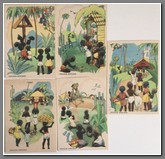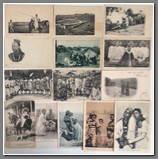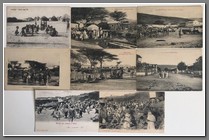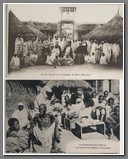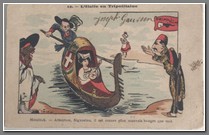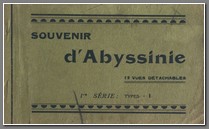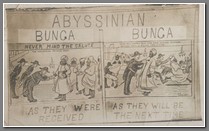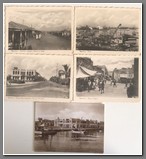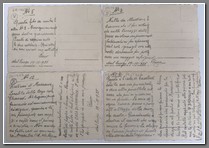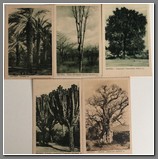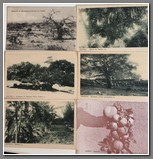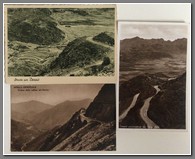Postcard Collections
14 postcards of types and views of Abyssinia. Shown are a Galla chief, indigenous quarter of Addis Abeba, an Abyssinian warrior, a local remedy for a headache, queen Taitou, drawing water, an Abyssnian princess and her slaves, an indigenous family, Beni-Amer types, Dunkali dancers, Dunkali women, female Galla.
Price: $420.00
3 colonial postcards showing Italian investment in Ethiopian transportation infrastructure. B ASK FOR AVAILABILITY
Price: $60.00
Note from Wikipedia: There was substantial investment in Ethiopian infrastructure development, with the budget for AOI from 1936 to 1937 requiring 19,136 billion lire when the annual revenue of Italy was only 18,581 billion lire. This infrastructure development was part of a plan to bring half a million Italians to colonize the Ethiopian plateaus. In October 1939 the Italian colonists in Ethiopia were 35,441, of whom 30,232 male (85.3%) and 5,209 female (14.7%), most of them living in urban areas. Only 3,200 Italian farmers moved to colonize farm areas, mostly around the capital and in the Scioa Governorate, where they were under sporadic attack by pro-Haile Selassie guerrillas through 1939. The Italians created the "imperial road" between Addis Ababa and Massaua, the Addis Ababa – Mogadishu and the Addis Ababa – Assab. The Italians built more than 4,500 km of roads linking the country beyond 900 km of railways were reconstructed or initiated (like the railway between Addis Ababa and Assab), dams and hydroelectric plants were built, and many public and private companies were established in the underdeveloped country. The most important were: "Compagnie per il cotone d'Etiopia" (Cotton industry); "Cementerie d'Etiopia" (Cement industry); "Compagnia etiopica mineraria" (Minerals industry); "Imprese elettriche d'Etiopia" (Electricity industry); "Compagnia etiopica degli esplosivi" (Armament industry); "Trasporti automobilistici (Citao)" (Mechanic & Transport industry).

